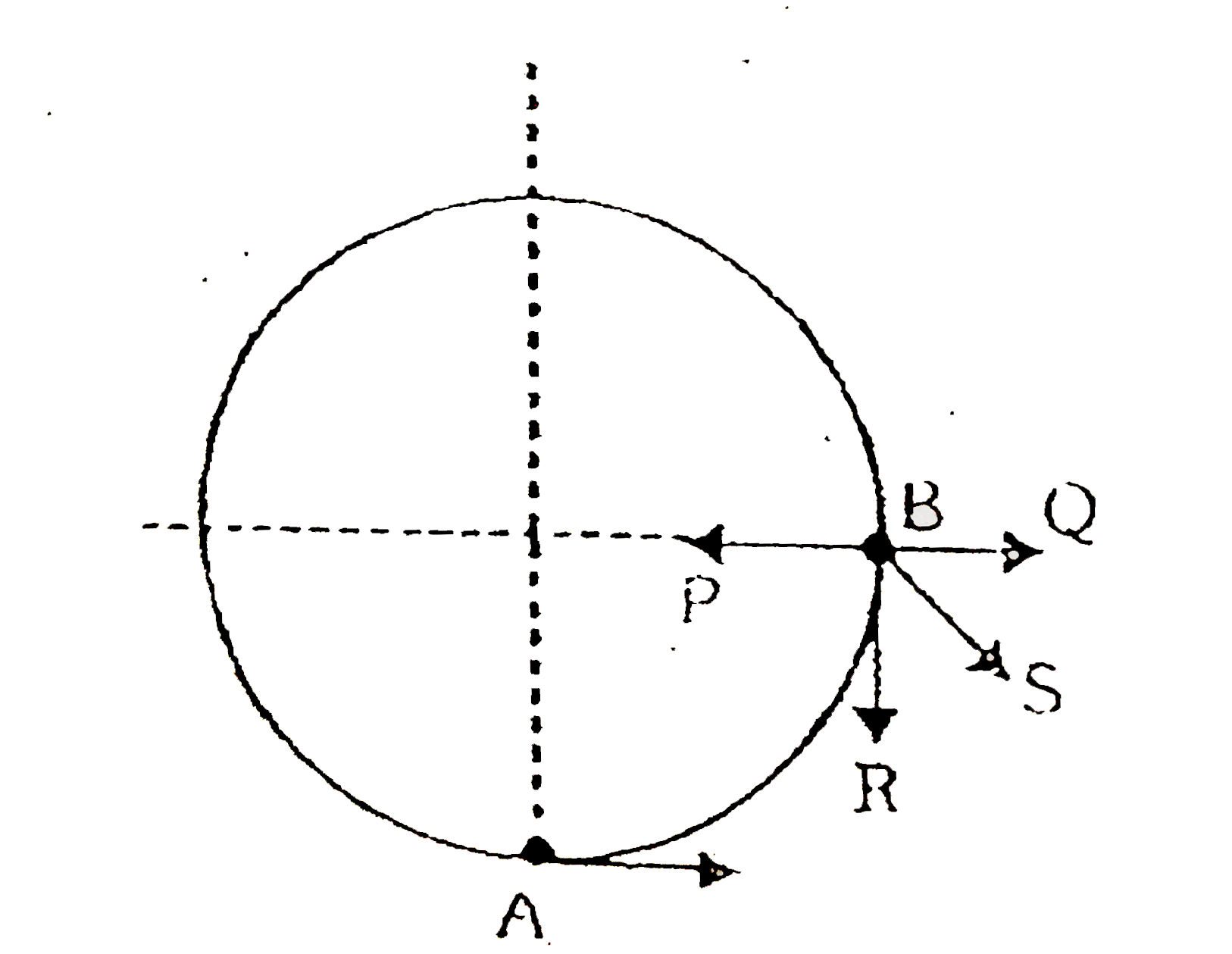A spherical ball is moving with terminal velocity inside a liquid determine the relationship of rate of heat loss with the radius of ball.
To determine the relationship of the rate of heat loss with the radius of a spherical ball moving with terminal velocity inside a liquid, we can follow these steps:
1. Understand the Concept of Terminal Velocity:
- When a spherical ball moves through a fluid, it eventually reaches a constant speed known as terminal velocity. At this point, the forces acting on the ball (gravitational force and drag force) are balanced.
2. Identify the Forces Acting on the Ball:
- The gravitational force acting on the ball is given by:
Fg=43πr3ρg
where r is the radius of the ball, ρ is the density of the ball, and g is the acceleration due to gravity.
- The drag force acting on the ball when it is moving with terminal velocity is given by:
Fd=6πηrvt
where η is the viscosity of the liquid and vt is the terminal velocity.
3. Set the Forces Equal at Terminal Velocity:
- At terminal velocity, the gravitational force is equal to the drag force:
43πr3ρg=6πηrvt
4. Solve for Terminal Velocity:
- Rearranging the equation to solve for vt:
vt=29gr2(ρ−ρf)η
where ρf is the density of the fluid.
5. Determine the Rate of Heat Loss:
- The rate of heat loss (or power) can be expressed as:
P=Fd⋅vt=(6πηrvt)⋅vt=6πηrv2t
6. Substitute the Expression for Terminal Velocity:
- Substitute vt into the power equation:
P=6πηr(29gr2(ρ−ρf)η)2
- Simplifying this gives:
P=6πηr⋅481g2r4(ρ−ρf)2η2
- This simplifies to:
P∝r5
7. Conclusion:
- Therefore, the rate of heat loss is directly proportional to the fifth power of the radius of the spherical ball:
P∝r5
- When a spherical ball moves through a fluid, it eventually reaches a constant speed known as terminal velocity. At this point, the forces acting on the ball (gravitational force and drag force) are balanced.
- The gravitational force acting on the ball is given by:
Fg=43πr3ρg
where r is the radius of the ball, ρ is the density of the ball, and g is the acceleration due to gravity.
- The drag force acting on the ball when it is moving with terminal velocity is given by:
Fd=6πηrvt
where η is the viscosity of the liquid and vt is the terminal velocity.
- At terminal velocity, the gravitational force is equal to the drag force:
43πr3ρg=6πηrvt
- Rearranging the equation to solve for vt:
vt=29gr2(ρ−ρf)η
where ρf is the density of the fluid.
- The rate of heat loss (or power) can be expressed as:
P=Fd⋅vt=(6πηrvt)⋅vt=6πηrv2t
- Substitute vt into the power equation:
P=6πηr(29gr2(ρ−ρf)η)2
- Simplifying this gives:
P=6πηr⋅481g2r4(ρ−ρf)2η2
- This simplifies to:
P∝r5
- Therefore, the rate of heat loss is directly proportional to the fifth power of the radius of the spherical ball:
P∝r5
Topper's Solved these Questions
- BOOK - RESONANCE ENGLISHCHAPTER - ELASTICITY AND VISCOCITYEXERCISE - Exercise- 1 PART - I8videos
ELASTICITY AND VISCOCITY
- BOOK - RESONANCE ENGLISHCHAPTER - ELASTICITY AND VISCOCITYEXERCISE - Exercise- 1 PART - II14videos
ELASTICITY AND VISCOCITY
- BOOK - RESONANCE ENGLISHCHAPTER - DAILY PRACTICE PROBLEMSEXERCISE - dpp 92 illustration2videos
DAILY PRACTICE PROBLEMS
- BOOK - RESONANCE ENGLISHCHAPTER - ELECTROMAGNETIC INDUCTIONEXERCISE - Exercise43videos
ELECTROMAGNETIC INDUCTION
Similar Questions
A spherical ball falls through viscous medium with terminal velocity v. If this ball is replaced by another ball of the same mass but half the radius, then the terminal velocity will be (neglect the effect of buoyancy.)
View SolutionA ball of mass m inside a smooth spherical shell of radius R with velocity √2qR at A What is the direction of force acting on the ball, when it reaches B ?
 View Solution
View SolutionA solid spherical ball of iron with radius 6 cm is melted and recase tin to three solid spherical balls . The radii of the two of the balls are 3 cm and 4 cm respectively determine the diameter of the third ball.
View SolutionWhat is Stoke.s law ? Define terminal velocity and calculate it for a spherical body moving vertically in a liquid and show that it is proportional to square of the radius of the spherical body.
View SolutionThree metallic spherical balls of radii 3 cm, 4 cm and 5 cm are melted and recast into a big spherical ball. Find the radius of this big ball.
View SolutionA metal ball falls through water with terminal velocity 20 ms−1. When the ball is allowed to fall through vacuum, then
View SolutionA spherical ball of iron has been melted and made into smaller balls. If the radius of each smaller ball is one-fourth of the radius of the original one, how many such balls can be made?
View SolutionA rubber ball of bulk modulus B is taken to a depth h of a liquid of density ρ. Find the fractional change in the radius of the ball.
View SolutionA solid spherical ball of iron with radius 6 cm is melted and recast into three solid spherical balls. The radii of the two balls are 3 cm and 4 cm respectively, determine the diameter of the third ball.
View SolutionA small lead ball is falling freely in a viscous liquid The velocity of the ball
View Solution

